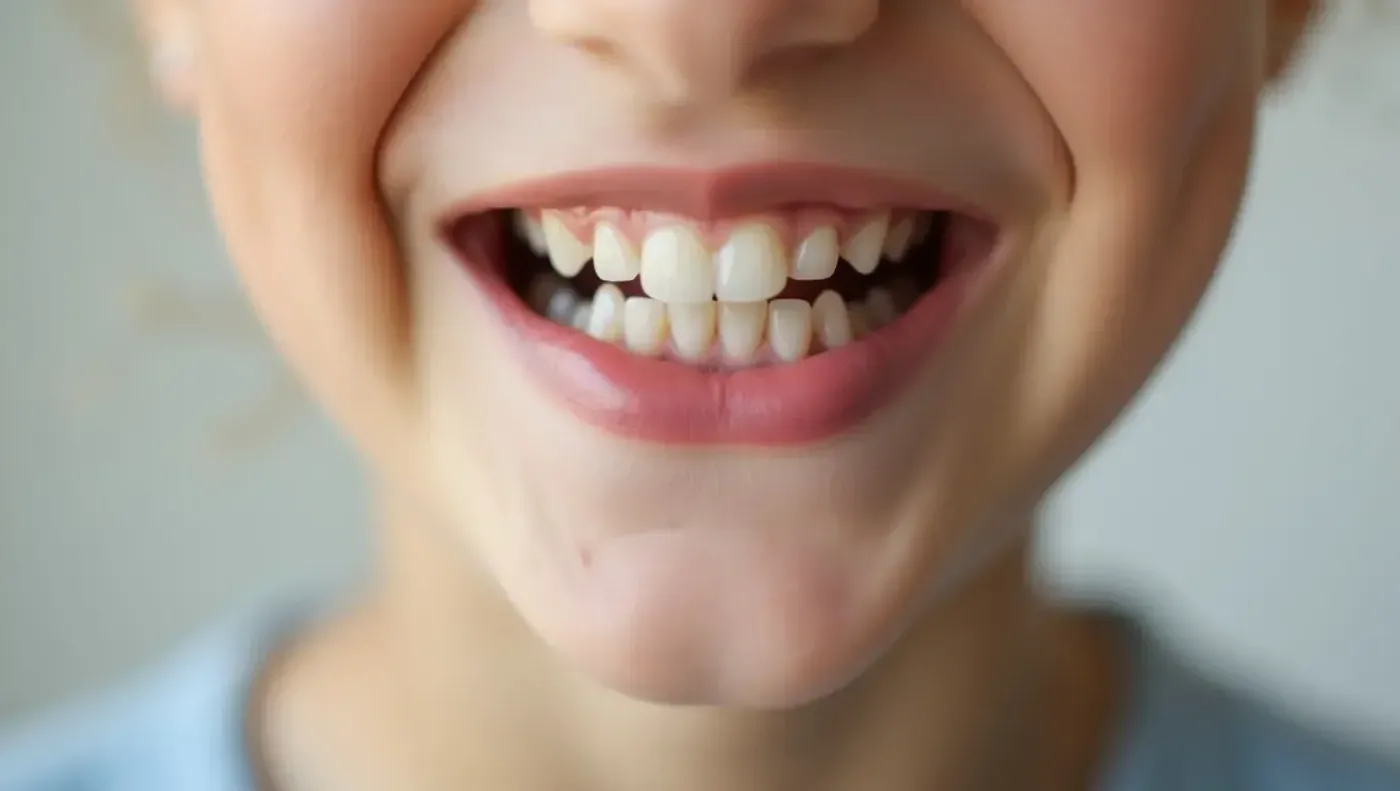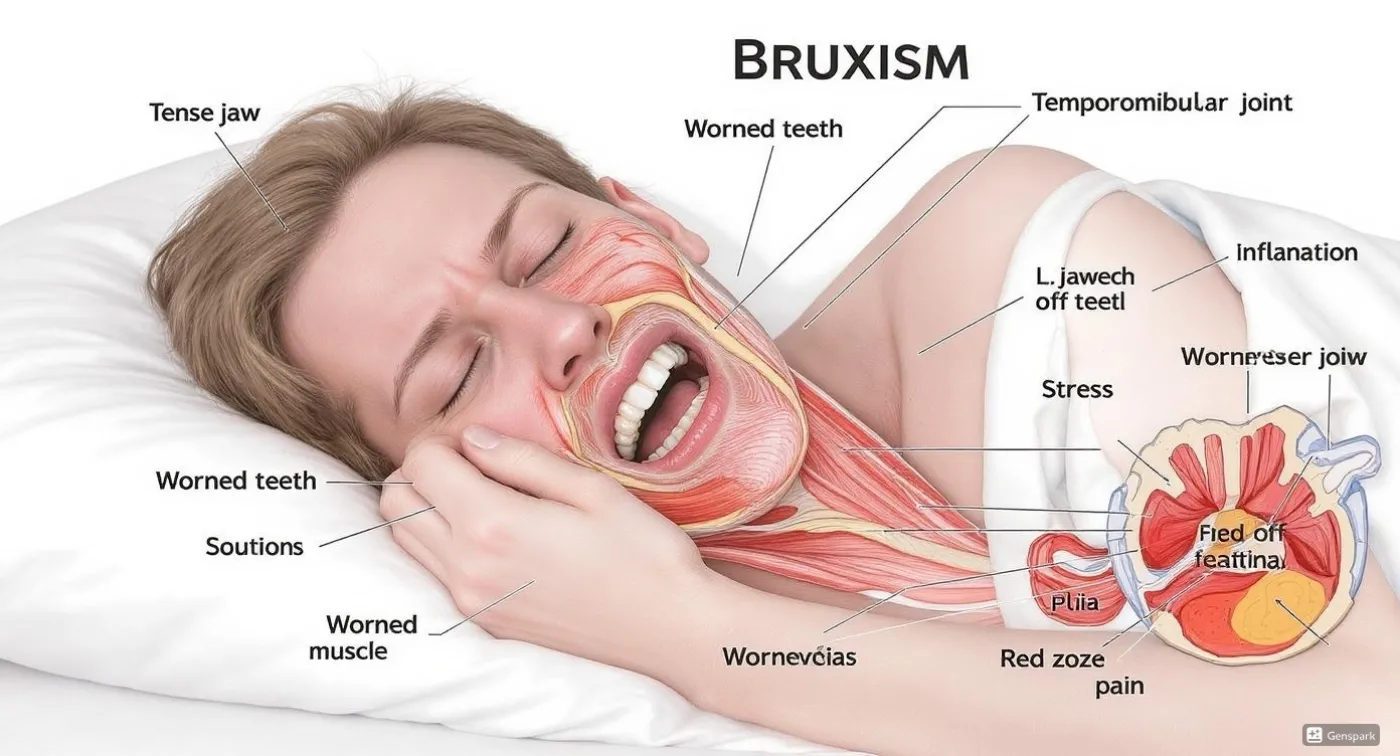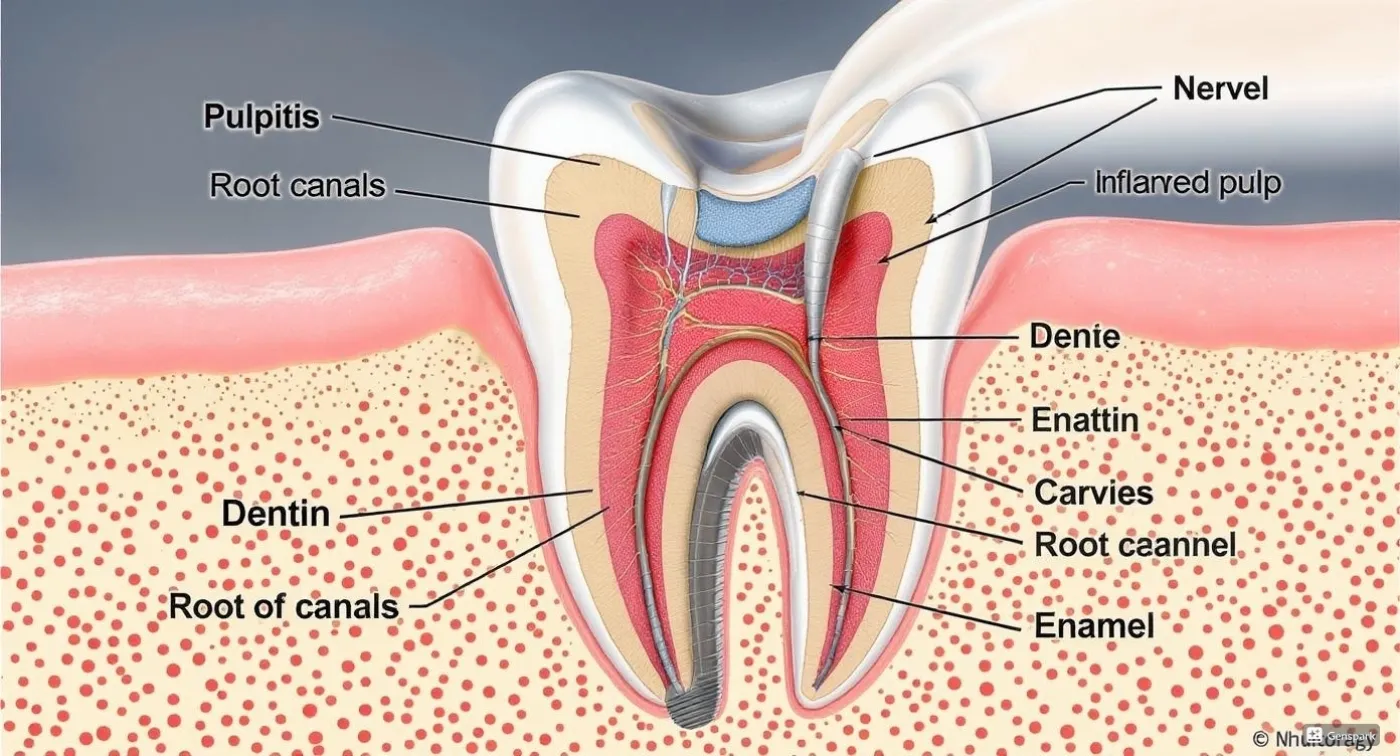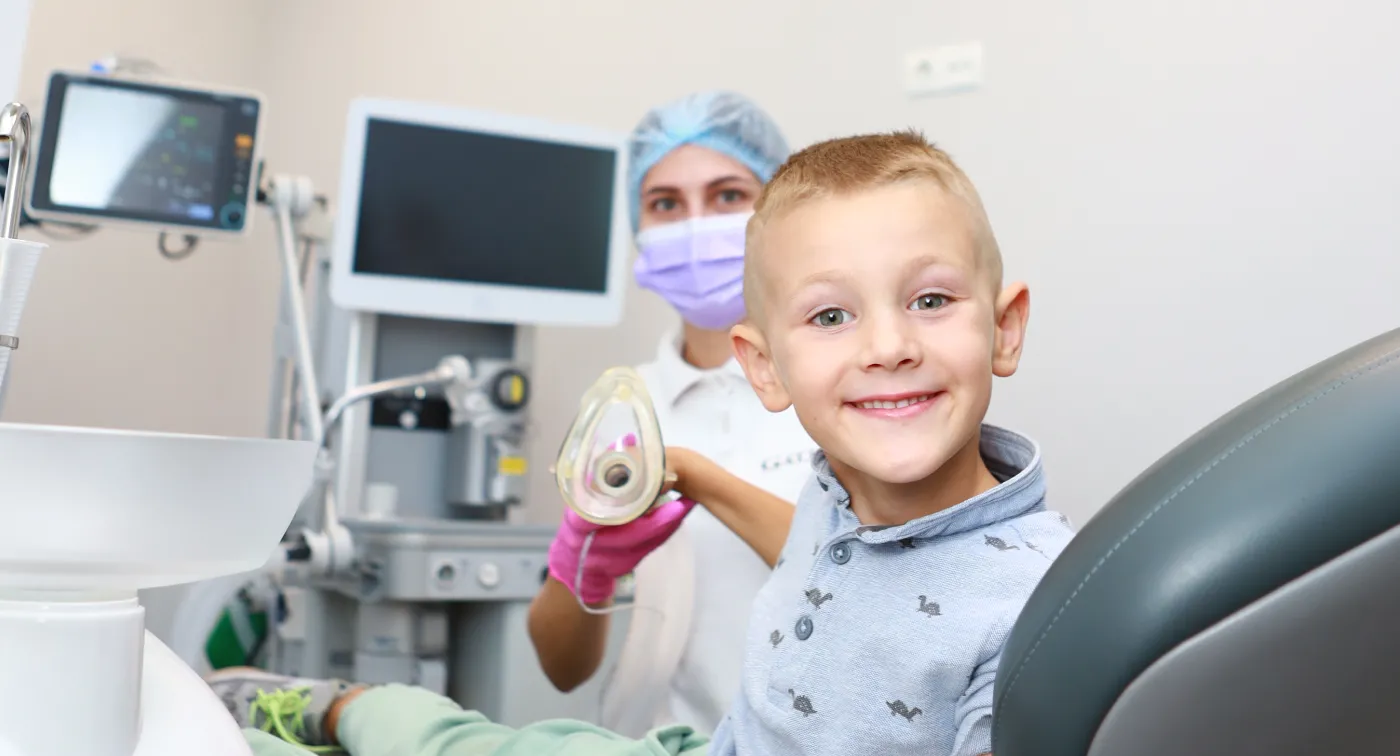Crooked teeth are not just an aesthetic issue but also a health risk, ranging from cavities to bite disorders. Timely diagnosis and orthodontic treatment, such as braces or aligners, can help prevent complications.

Crooked Teeth in Children and Adults: Causes, Consequences, and Modern Methods of Alignment
Crooked teeth are a condition characterised by improper growth or positioning of teeth within the dental arch. Many people consider this merely an aesthetic issue and therefore do not seek professional help. However, uneven teeth negatively affect oral health. Often, this problem causes bite disorders, which impact not only the functionality of the teeth and jaws but can also affect other bodily systems.
Tooth misalignment is a common problem, especially among children whose jaws are still developing. In adults, such issues often result from untreated problems during childhood. That is why it is important to detect deviations early and undergo appropriate treatment.
Causes of Crooked Teeth
Misalignment of the teeth can arise from various causes, and they are not always related to lifestyle factors. Some common contributing factors include:
- Genetic predisposition. If one or both parents had crooked or crowded teeth, it is highly likely their child will face a similar issue. Incorrect bite can also be inherited. Genetics also influence jaw size; if the jaw is too small, there may not be enough space for permanent teeth to grow properly.
- Harmful habits. Thumb sucking, pacifier use, tongue thrusting, and mouth breathing gradually contribute to improper teeth positioning and can cause misalignment as early as childhood.
- Early loss of baby teeth. Baby teeth are important not only for chewing and proper speech but also for holding space for permanent teeth. Damage or untreated cavities in baby teeth can cause adjacent teeth to shift into the free space, resulting in crooked growth of permanent teeth.
- Injuries. Trauma to the jaw or face can alter the position of teeth or affect their growth. This is especially relevant for active children involved in sports. In such cases, wearing a protective mouthguard is recommended.
- Poor nutrition. Deficiency of vitamin D, calcium, and other minerals at an early age affects dental health and jaw development, which can lead to misalignment.
- Crowding of teeth. One of the most common causes of crooked teeth. When there is insufficient space, teeth grow in wherever they can.
Another frequent cause of misaligned permanent teeth is late eruption and improper positioning of wisdom teeth. This issue becomes particularly acute when wisdom teeth grow sideways and push against neighboring molars, causing pain and displacement of the dental arch. Wisdom teeth often lack sufficient space in the jaw, which also contributes to misalignment. In cases of incomplete dental arches, timely prosthetic treatment is essential. Otherwise, as with baby teeth, adjacent teeth will shift to fill the gaps.
Signs of Crooked Teeth and Degrees of Misalignment
The term “crooked teeth” refers to improper growth, overlapping, or teeth positioned incorrectly in the dental arch. This can include tilted or twisted incisors or molars, as well as crowded or displaced teeth. Large gaps between teeth can also indicate a problem. Signs vary depending on the stage of misalignment. Specialists distinguish the following degrees:
- Mild. One or several teeth have deviations in shape or position. Slight crowding or gaps may be present.
- Moderate. At this stage, bite disturbances become noticeable. Difficulties with pronunciation and chewing may occur.
- Severe. In this case, the disorder is accompanied by jaw deformation. Teeth are very crooked, interfering with proper occlusion. The patient experiences constant pain and functional impairments.
It is important to pay attention even to minor changes in tooth positioning. Early intervention helps prevent worsening and complications. If something about your smile causes concern, it’s best to consult a specialist. They can determine the degree of misalignment and select the optimal treatment.
Possible Consequences of Crooked Teeth
Crooked teeth are not only an aesthetic issue. Due to improper positioning, functional problems may arise, including:
- Chewing difficulties — food is not chewed properly (which can lead to digestive system disorders), and the load on the jaw is unevenly distributed;
- Speech difficulties — sounds are pronounced incorrectly or with difficulty;
- Constant discomfort — during biting, speaking, or even at rest;
- Temporomandibular joint dysfunction (in severe cases) — manifested by pain, clicking, or crunching in the jaw.
In addition to functional impairments, crooked teeth can cause various complications, such as:
- Tooth decay and bad breath. Because it’s hard to reach plaque and food debris between crooked teeth with a toothbrush or floss, plaque accumulates, leading to tooth decay and unpleasant breath.
- Gum disease. Inflammation, bleeding, and gum recession can result from poor hygiene due to crowding. In advanced cases, tooth loss is possible.
- Enamel wear. Due to improper bite or uneven jaw closure, teeth wear down unevenly. This can cause cracks, chips, and increased sensitivity.
- Psychological discomfort. A person with crooked teeth may feel embarrassed to smile, avoid photos, or public speaking.
If the problem is ignored, the situation worsens over time: facial symmetry is disrupted, improper chewing habits develop, which may cause neck and back pain. Quality of life significantly declines. Timely correction is a chance to avoid serious future consequences, maintain oral health, and feel confident every day.
Diagnosis of Crooked Teeth
The problem can often be detected visually, especially if the front teeth are crooked or crowded. To identify not only external changes but also hidden bite disorders or root positioning issues, specialists use a comprehensive approach. Professional methods for detecting crooked teeth include:
- Panoramic X-ray (orthopantomogram) — allows viewing all teeth, including those that have not yet erupted, and assessing the position of their roots;
- 3D jaw scanning — creates a digital model of the dental arch for accurate diagnosis and treatment planning;
- Taking dental impressions — enables the creation of a plaster model to evaluate tooth shape and spacing density.
Special attention is paid to the growth of baby teeth, as they largely determine the features of the permanent bite. Early signs of problems include excessive crowding, large gaps, or early enamel wear. In adults, signs include shifting of the dental arch, bite changes, and complaints of discomfort while chewing or speaking. The doctor may also take photos of crooked teeth and the face to later assess treatment progress.
After the examination, the orthodontist determines the degree of misalignment. Based on diagnostic results, a diagnosis is made and a treatment plan is developed.
Methods of Treating Crooked Teeth
Modern dentistry offers many solutions for aligning teeth in both children and adults. Even complex cases with severe misalignments or jaw deformities can be corrected by selecting the right method.
Orthodontic Solutions
The most common treatment for crooked teeth is braces. These are fixed systems that gradually straighten the dental arch. The basic principle of their function is:
- A small bracket is attached to each tooth;
- The brackets are connected by an archwire, which applies pressure and moves the teeth into the correct position;
- The orthodontist periodically adjusts the tension of the wire to ensure proper correction.
Braces can be metal, ceramic, or sapphire. The optimal option is chosen depending on aesthetic preferences and budget. After treatment, retainers are installed to help maintain the result.
Another popular solution is aligners. This method involves creating a custom set of transparent trays for the patient. Each tray corresponds to a certain stage of treatment and is worn in sequence. Aligners are removable, which makes eating and oral hygiene convenient. Patients quickly get used to them and barely feel them in the mouth. It is important to wear aligners for about 22 hours a day to achieve the desired outcome. This option is suitable for those who want the treatment to be as discreet as possible.
Surgical Methods
In complex cases, such as severe crowding of teeth, incorrect jaw positioning, or the need to create space in the oral cavity, surgical intervention may be required. Depending on the clinical situation, different procedures can be performed:
- Extraction of certain teeth - allows creating space for other teeth;
- Jaw shape correction;
- Implantation - if teeth have been removed or lost.
Surgical treatment is always planned individually and is often combined with orthodontic methods.
Aesthetic Methods to Mask Crooked Teeth
If defects in the dental arch are minor and affect only the appearance of the smile, they can be corrected with veneers or lumineers. These are very thin coverings placed on the front surface of the teeth to achieve an ideal smile appearance. Veneers and lumineers do not correct the bite but help visually improve the alignment of teeth.
Another option is artistic reshaping. This method involves applying composite material that changes the shape of individual incisors.
Features of Teeth Alignment in Children and Adults
If parents notice that baby teeth are growing crooked, this should not cause immediate panic. However, it is advisable to show the child to an orthodontist. Baby teeth can be straightened if there is significant crookedness or bite problems. Orthodontic systems can guide jaw growth and help prevent complications in the future. Besides children's braces, functional appliances (removable or fixed) may also be used.
The main focus of treatment is permanent teeth. It is best to align them during childhood. Children's jaws are still developing, so correction is faster and more effective. Treatment in adults usually takes longer but is also effective. Modern technologies enable successful correction of even the most complex cases.
FAQ: Answers to Frequently Asked Questions
Why are teeth crooked?
Various factors can cause crooked teeth. Some of these are beyond our control. For example, teeth may grow crooked due to genetic predisposition, jaw development disorders, improper attachment of the tongue or lip frenulum, or trauma. However, often the patient themselves can cause misalignment. Harmful habits such as prolonged thumb sucking, pacifier use, or lack of solid food in the diet can lead to tooth displacement.
When should a child see an orthodontist?
The optimal age for the first consultation is 6-7 years, when the bite begins to change. You may visit the doctor earlier if there is pronounced crookedness, large gaps between teeth, or visible bite problems.
When do children get braces?
Braces are usually placed on children at the age of 11-12, when most permanent teeth have erupted. However, in some cases, the orthodontist may recommend earlier treatment depending on individual characteristics and severity of misalignment.
How much does orthodontic treatment cost?
To find out the cost of teeth alignment in a specific case, you should consult an orthodontist. Only after diagnosis and treatment planning can the doctor provide an exact price.
Is it possible to straighten teeth at home?
No, it is impossible to fix crooked teeth by yourself. Moreover, using dubious methods may cause serious oral health problems, gum injury, and enamel damage. Orthodontic treatment must be performed by a qualified specialist who has access to professional dental materials and tools.
Request a call
We will contact you to schedule a convenient time for your consultation and connect you with the right specialist
More articles
We have gathered all the most interesting posts from our specialist doctors in our blog just for you
Dental Treatment During Pregnancy: Myths and Facts

Bruxism (Teeth Grinding) and How to Get Rid of It Forever


Request a call
We’ll get back to you shortly!

Leave a Review
Your feedback means a lot to us!




